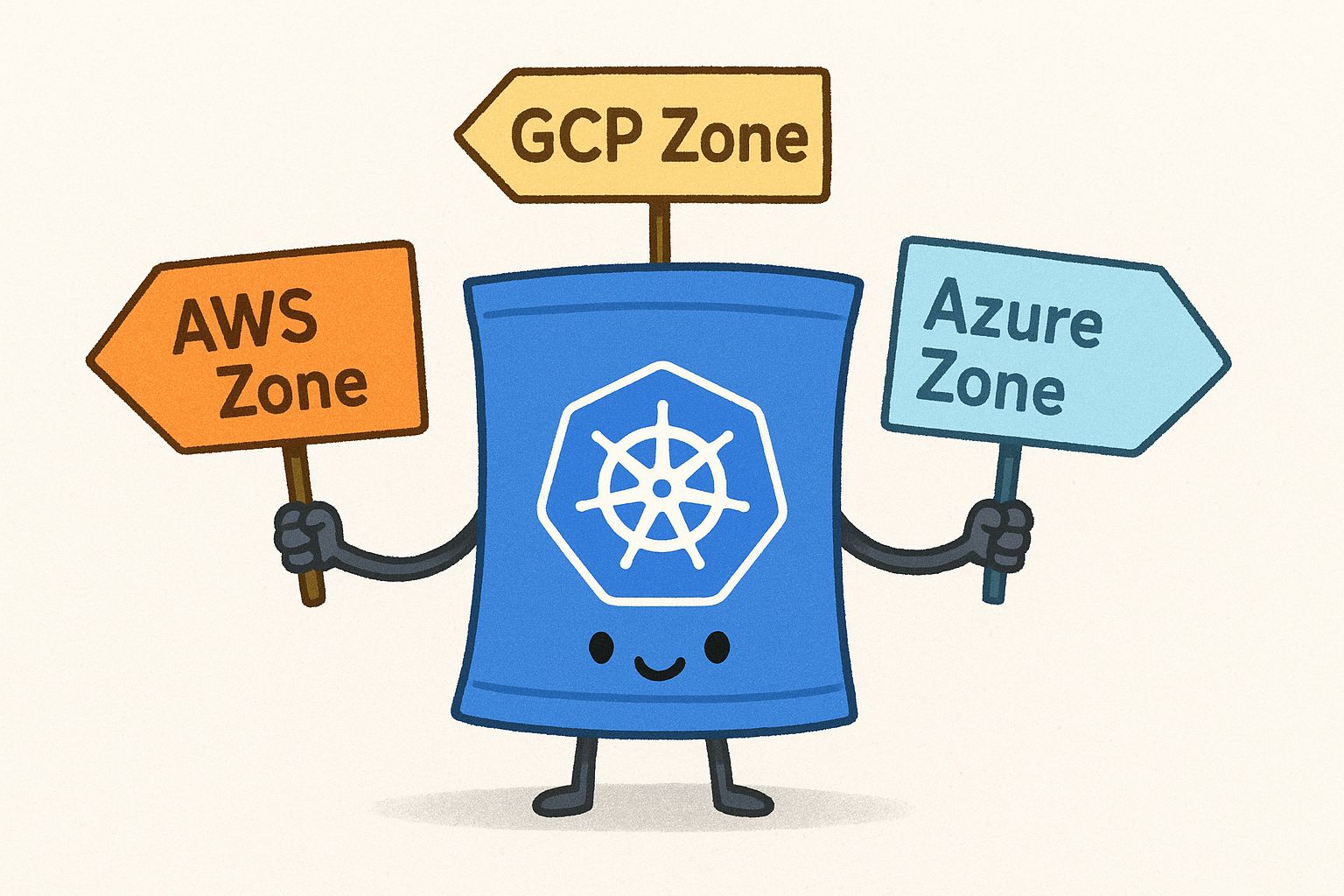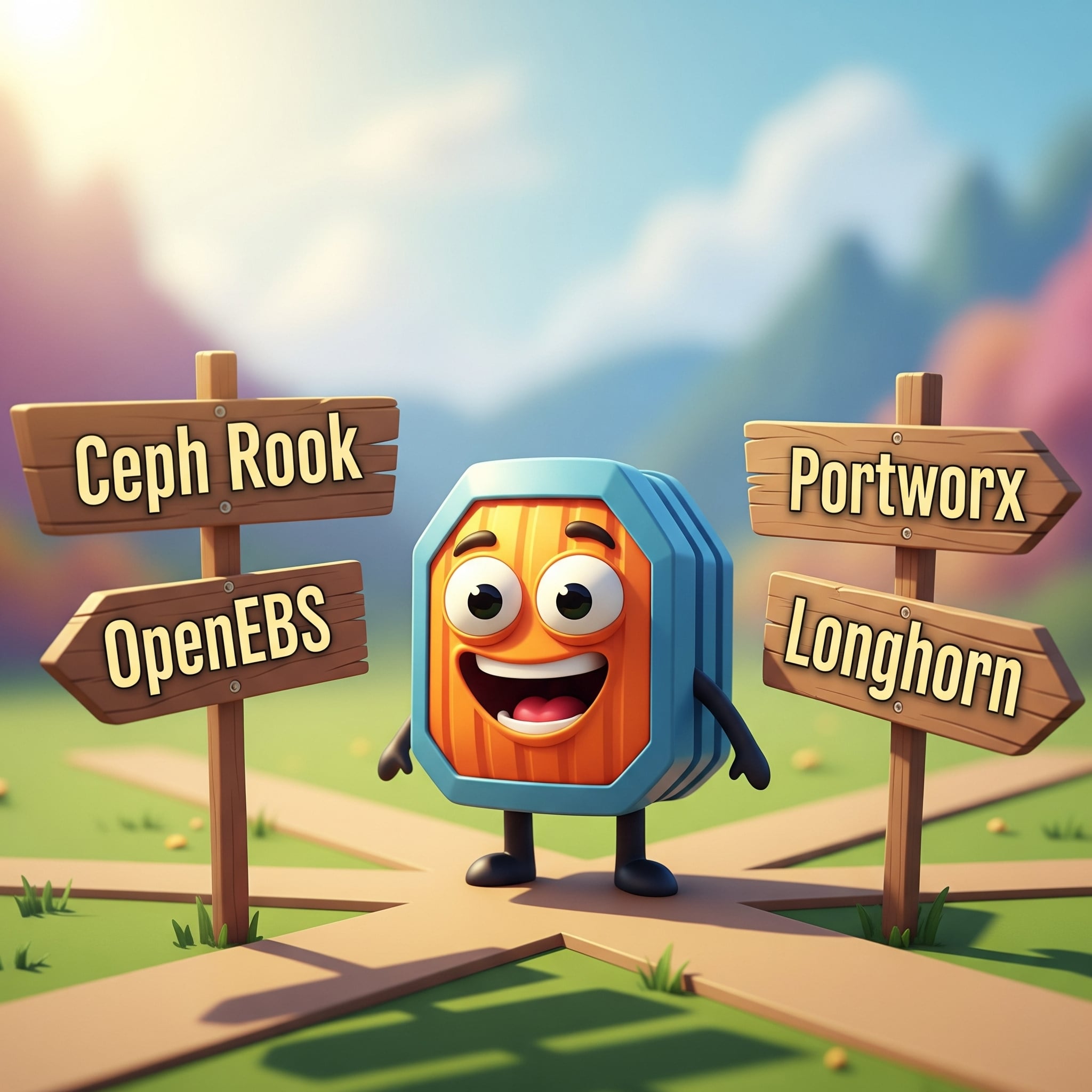Taming Multi-Cloud Kubernetes Networking with Topology Aware Routing
Behrouz Hassanbeygi
July 21, 2025
/
Vanilla Kubernetes is as flexible as it gets.
You have full control over every component—networking, storage, auth, monitoring—but with that power comes complexity. 🧱
It’s a great option if you have the time, skills, and team to manage it.
Rancher RKE2, on the other hand, promises a faster path to production. 🐮
It’s a hardened, CNCF-conformant Kubernetes distribution that comes with baked-in security and operational tooling.
Paired with Rancher Manager, it gives you a UI-driven, multi-cluster control plane with built-in support for:
For the PoC, we spun up two environments on virtual machines and bare metal:
Our goals were clear:
We timed how long each step took and documented the operational pain points along the way.
🔐 Security & Hardening
RKE2 ships pre-hardened with CIS benchmarks, SELinux, and secure defaults enabled.
Vanilla Kubernetes required extensive manual work to reach the same level. ❌
👥 Authentication & RBAC
Rancher’s centralized identity management made it easy to connect LDAP, SAML, or GitHub.
Vanilla K8s? You’re writing YAML and deploying third-party tools. 📄
🔄 Upgrades
One-click upgrades in Rancher were reliable and well-documented.
Upgrading vanilla Kubernetes was risk-prone, manual, and required serious automation. 🧪
🌐 Lifecycle Management
Rancher gave us a single dashboard to manage multiple clusters, backups, monitoring, and GitOps.
With vanilla K8s, each integration had to be wired up and tested separately. 🧵
Vanilla Kubernetes remains the most flexible option. 🛠️
If you have unique requirements, need to customize everything, or want zero vendor influence, it’s unbeatable.
It’s also the best learning environment for understanding how Kubernetes works under the hood. 🧠
But that flexibility comes at a cost—expect to spend significantly more time getting things production-ready. ⏱️
The Rancher-based setup took about 21–26 hours end to end.
The vanilla Kubernetes setup? Closer to 50–70 hours, depending on how much tuning was required.
✅ Rancher lets us move fast without skipping security or observability.
🧪 We had more confidence in the outcome, and we spent more time testing workloads instead of debugging the cluster setup.
If you’re the kind of reader who loves to see everything side by side, don’t worry, we’ve got you.
We documented a detailed comparison table showing exactly how Rancher RKE2 + Rancher Manager stacks up against vanilla Kubernetes across key categories:
| Task | Rancher RKE2 + Manager (HA) | Vanilla Kubernetes + 3rd-party |
|---|---|---|
| Infrastructure Prep (VMs, network) | 4 hours | 4 hours |
| Install HA Cluster (K8s) | 4 hours | 8–12 hours |
| Install Rancher Manager in HA | 2 hours | N/A |
| Install Dashboard/Management Tooling | Included | 2–3 hours |
| Enable Authentication & SSO | 1–2 hours | 4–6 hours |
| Set Up RBAC and User Access | 1 hour | 2–4 hours |
| Monitoring Setup | 1–2 hours | 4–6 hours |
| Backup & DR | 1–2 hours | 4–6 hours |
| Cluster Hardening (CIS, PSPs) | 2–3 hours | 6–10 hours |
| TLS, Secrets & etcd Security | Built-in | 4–6 hours |
| GitOps / Fleet Setup (optional) | 1–2 hours | 4–6 hours |
| Documentation & Test Validation | 2 hours | 3–4 hours |
| Activity | Rancher HA Setup | Vanilla Kubernetes Setup |
| Total Core Setup Time | 21–26 hours | 51–69 hours |
| Effort Reduction with Rancher | ~50% faster + simpler | – |
| Criteria | Rancher RKE2 + Manager | Vanilla Kubernetes |
| Time-to-value | ⚡ Quick (~2–3 days) | 🐢 Slow (~1–2 weeks) |
| Risk for PoC delays | 🔽 Low | 🔼 High |
| Feature parity effort | 🔽 Low (integrated) | 🔼 High (manual) |
| Documentation/testing | ✅ Easy (centralized) | ❌ Fragmented |
Whether you're presenting to your team or making a technical decision, this will give you the facts.
In hindsight, Rancher RKE2 gave us everything we needed with half the operational effort.
It removed many of the common traps in running Kubernetes manually, especially when it comes to security and lifecycle management.
For teams looking to deliver quickly, securely, and at scale, Rancher is hard to beat. 🏁
Address
Level 8
11-17 York Street
Sydney NSW 2000
Phone Number
+61 2 8294 8067
Email
[email protected]

By Behrouz Hassanbeygi

By Behrouz Hassanbeygi
© 2017-2026 Darumatic Pty Ltd. All Rights Reserved.